Taking to the skies - Protecting seabirds
Naked Oceans takes to the skies this month to explore the world of seabirds. They may not have gills, and only some of them have flippers, but there are plenty of our feathered friends that spend some or all of their time at sea. We look into the threats they face today and find out about a new network of conservation zones, called Important Bird Areas, that are being set up to protect seabirds around the world. And we find out how scientists study the bird with the largest wings on the planet - the incredible wandering albatross. As always, we have a run down of some of the latest marine science and conservation news headlines. And in Critter of the Month, we meet a colourful denizen of the deep that has trouble keeping its emotions hidden.
In this episode
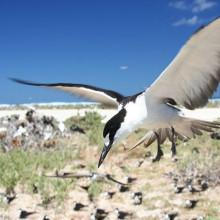
01:21 - Moving Important Bird Areas into the sea
Moving Important Bird Areas into the sea
with Ben Lascelles, Birdlife International
Important Bird Areas (or IBAs) form a network of protected sites aimed at safeguarding birds across the globe. For several decades there have been IBAs on land and now Birdlife International is working with partners around the world to extend the network to protect birds that spend some or all of their lives at sea. Ben Lascelles tells us how that process is going, the challenges they face, and just what it is about Important Bird Areas that makes them so important.
Helen - Birds are notoriously mobile. How can a fixed protected area actually contribute to protecting them at a global scale. What sort of things go on inside these areas, presumably this is where they breed, feed, that sort of thing?
Ben - So there's really 4 kinds of site that we feel are suitable for site-based conservation approaches. Those are areas around the breeding colony where birds feed or roost, non-breeding areas where they might congregate in coastal zones, migration bottlenecks and pelagic feeding areas around things like seamounts, upwellings, all that kind of stuff.
Helen - presumably there are an awful lot of marine species that use the ocean for some of part of their life spans. Are we talking 100s of species, 1000s of species?
Ben - We have a list of about 350 species that rely on the marine environment for at least part of the year. Some of those are true seabirds that people think of like penguins and albatrosses, but there are a number of other more coastal species things like terns and cormorants that also might be suitable for this kind of approach.
Helen - And what sort of threats are we talking about?
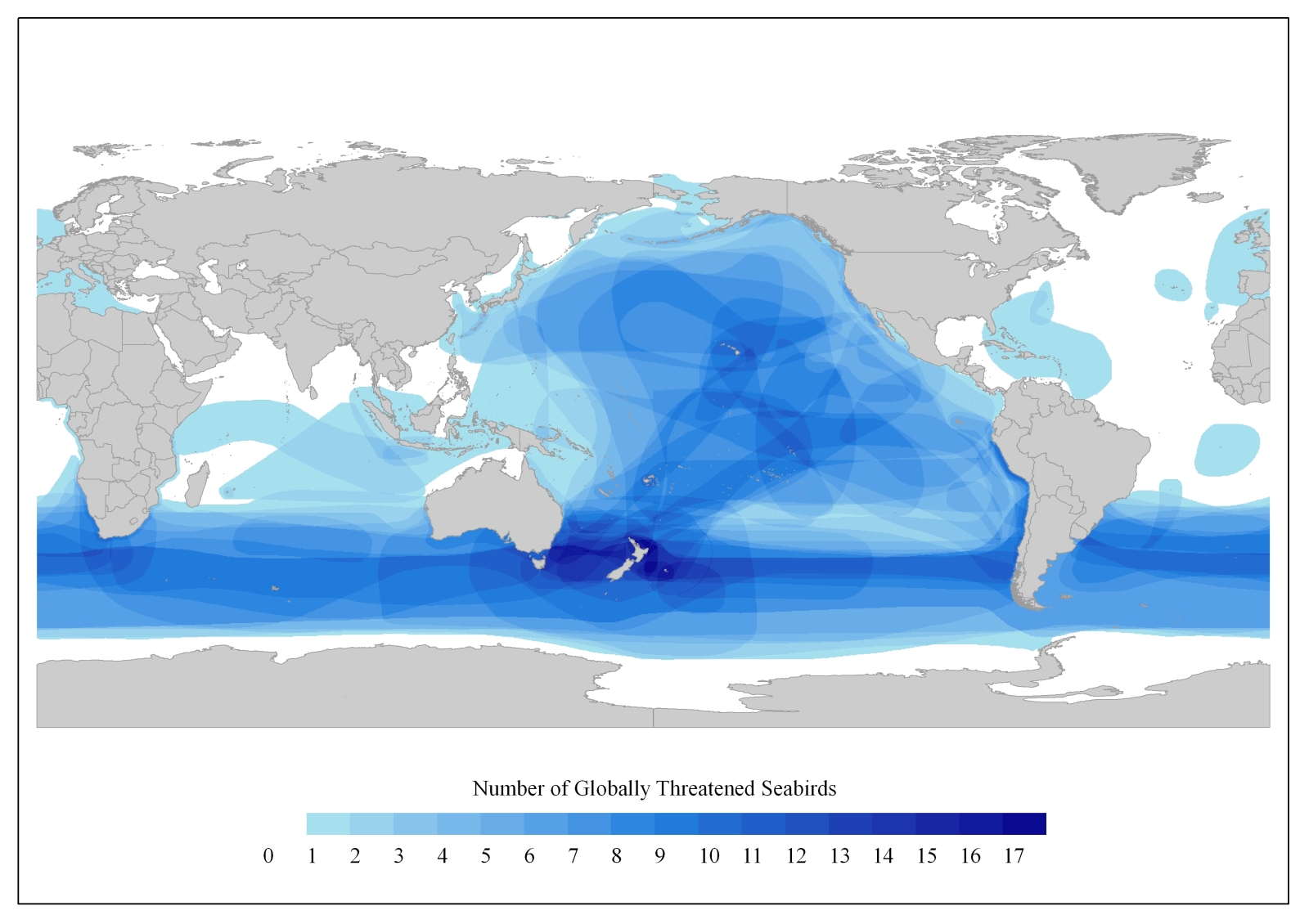 Ben - probably the biggest is bycatch, incidental bycatch from fisheries activities, longline fishing is particularly bad for that and can kill hundreds of thousands of sea birds a year.
Ben - probably the biggest is bycatch, incidental bycatch from fisheries activities, longline fishing is particularly bad for that and can kill hundreds of thousands of sea birds a year.
So we really feel these sites can help inform where bycatch management can be used. The work we're doing can also inform other ocean user groups, things like offshore wind farms can be particularly bad for some species, oil and gas exploration, development, management of oil spills, there's a whole range of things that either cause direct mortality to seabirds or have incidental secondary effects.
One of the challenges is to try and convince people there are lots of birds in a particular location now that they'll be there next year or the year after. And for some places that's relatively easy when you've got some sort of static feature like a seamount, but in other cases that's quite hard where you have moving frontal zones or upwelling systems that can be seasonal or vary annually.
Helen - And I've got to assume that by taking on the marine realm you're introducing a whole new set of challenges to doing this kind of approach to conservation. What are some of those things that you've had to deal with?
Ben - one of the biggest challenges is data. The oceans are so vast, that having useful data to analyse to come up with these sites in a consistent and defensible way is quite a challenge. Defining boundaries is very difficult because in terrestrial environments where a forest ends and a road begins is usually pretty obvious. But we don't have that luxury in the marine environment, so basing it on lines of latitude, longitude, bathymetry, that kind of thing, you need to use some slightly different approaches to come up with sites. So I'd say those are the two main challenges.
Helen - and are you going out and taking new data or is the idea to make use of what's already out there?
Ben - well very much to try and pull together what already exists so we can make a good first cut of the sites. And we really rely on 3 or 4 types of data: satellite tracking data being a key one for us, at-sea survey data from boats and planes, and then coastal counts can be useful as well, and there's new advances in things like radar that can be used to identify where birds are and in what numbers.
 Helen - So you've got this idea of gathering data together to find out parts of the oceans that birds use. And the Important Bird Areas are going to become a network, you're looking at establishing a global system for protecting seabirds. Is there are sort of goal in terms of the area you want to cover? How do you decide this is going to do the job we want it to do?
Helen - So you've got this idea of gathering data together to find out parts of the oceans that birds use. And the Important Bird Areas are going to become a network, you're looking at establishing a global system for protecting seabirds. Is there are sort of goal in terms of the area you want to cover? How do you decide this is going to do the job we want it to do?
Ben - I don't think we have an overall percentage that we're aiming for. We're more keen to ensure that sites are located in the right places to protect the right things. So really, we're letting the data tell us where sites should be, how big they should be, so that we can build up some good justification for them and then once we have a complete network for species and regions we should be in a position then to see what percentage overall that is.
Helen - I guess the question then becomes once you've identified this network how do we then go about implementing that and putting in conservation measures. What sort of things can we do to protect these birds?
Ben - One of the keys things we're trying to do having identified sites is link to relevant policy mechanisms, like the CBD (The Convention on Biological Diversity), or relevant regional agreements, things like in the NE Atlantic we have the OSPAR convention, elsewhere in the world we have things like the Nairobi Convention for the Indian Ocean, ASEAN Agreement for SE Asia, and there are a number of others around the world. So we're trying to build the capacity of our Birdlife partners to engage in these kind of agreements and put forward a network of sties that we feel are robust and have lots of support as to why they're important.
And also make the point that seabirds occur in areas used by lots of other marine biodiversity, things like sea mounts, upwellings, continental shelf, all those kind of things, and birds at the top of the food chain you can really use them as indicators of the state of the marine environment more generally.
Helen - And where are we at with this whole process of putting IBAs into the sea? Are the are any that have already been set up or is this something that's about to happen and we'll see it in the coming years?
Ben - The first attempts were probably done getting on for 10 years ago now but really Birdlife has only had a coordinated approach to this for the last 5 or 6 years. So there are now several national inventories of marine IBAs, some of the first were in Alaska, the Baltic, and Iberian Peninsular, Spain and Portugal. And we hope to launch later this year our first global inventory of marine IBAs at the next conference of the parties of the Convention on Biological Diversity in October 2012.
Helen - And are there any examples of a site that you've looked that's jumped out as being obviously a very important sites for birds? Are there any that are spectacular places that you've seen yourself that makes you think, this has got to be protected?
Ben - There are certainly lots of the major currents of the world. The Benguela, the Agulhas, the Humboldt Current, California Current - long recognised as being key places for breeding seabirds and during the non-breeding season.
I've been to the Humboldt a couple of times and done boat trips out there and the scale and the sheer number of birds and right whales and things like that is staggering.
Helen - The only place I've had a similar experience is further North, in California in Monterey. And I did once have a day out at sea where there was one of those bait balls, and there were hundreds and hundreds of dolphins and whales and seabirds and you're in the middle of it all and it's just spectacular.
Ben - I think everyone should try and see that at least once in their lives. It's an amazing event and don't think would leave anyone in any doubt that something has to be done to manage and protect these places in a sustainable way.
Find out more:
Birdlife International,
Global Seabird Programme
Birdlife International,
Marine Important Bird Areas website
Leaflet (PDF)
Marine Important Bird Areas, from Birdlife International
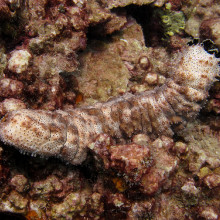
10:02 - Sea cucumbers dissolve coral reefs
Sea cucumbers dissolve coral reefs
A new study has uncovered the important role that humble sea cucumbers play in the balance of coral reefs, as it turns out their acidic gastric emissions cause coral reefs to dissolve.
Researchers at One Tree Island on Australia's Great Barrier Reef originally made measurements of seawater that showed that during the night, a significant portion of the coral reef dissolved away - and they didn't know why. But they did notice that there were a lot of sea cucumbers hanging out in the area, and they wondered if they perhaps were to blame.
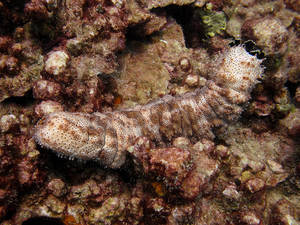 In the tropics these unprepossessing tubular relatives of starfish and sea urchins, spend much of their lives laying about on the seabed acting like living vacuum cleaners, slurping up mouthfuls of sand and coral rubble, and squirting out - from the other end - piles of cleaned up sediment. In the process they release dissolved calcium carbonate into the water.
In the tropics these unprepossessing tubular relatives of starfish and sea urchins, spend much of their lives laying about on the seabed acting like living vacuum cleaners, slurping up mouthfuls of sand and coral rubble, and squirting out - from the other end - piles of cleaned up sediment. In the process they release dissolved calcium carbonate into the water.
The team, led by Kenny Schneider from the Carnegie Institution for Science in California took some sea cucumbers into the lab and essentially measured what went in and what went out of them.
And they estimate that sea cucumbers are responsible for around half the carbonate dissolution every night on the coral reef. That might sound bad, but in fact sea cucumbers are doing a vital job of recycling nutrients back into the ecosystem to make them available to primary producers.
The dissolved calcium carbonate they release also helps to buffer against the rising levels of acidity in the oceans that's taking place because of increasing levels of carbon dioxide dissolving from the atmosphere.
It goes to show that there is still so much we need to learn about the complex interactions of species in ecosystems like coral reefs, and emphasizes the importance of maintaining all those different species - because even if they look like just harmless critters, lounging about on the seabed, they could be playing a very important role in the overall health of the ecosystem.
Find out more:
Kenny Schneider and Ken Caldiera
You Tube video discussing the study
Schneider et al. (2011). Potential influence of sea cucumbers on coral reef CaCO3 budget: A case study at One Tree Reef. Journal of Geophysical Research VOL. 116, G04032, 6 PP. doi:10.1029/2011JG001755
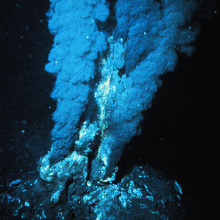
12:56 - Uncovering the deepest black smokers
Uncovering the deepest black smokers
A team from the University of Southampton and the National Oceanography Centre in Southampton have found new deep sea vents known as black smokers, after the black, mineral rich water they belch out, 5km down in a trench just off the Cayman Islands in the Caribbean, and a host of new species living around them. The vents are also almost a kilometre deeper than any other deep sea vents found, and one of them is spewing out a plume of mineral-laden water over a kilometre up into the sea!
The team sent an unmanned sub down to the vents to observe them and bring back samples of any life they found down there. Because despite the estimated temperature of the water - 450 degrees C, and the crushing pressures at that depth, it's not a lifeless landscape - the marine biologists led by Dr Jon Copley found a new species of shrimp clustering round the vents. They've called it Rimicaris hybisae, and it has no eyes, but it does have a light sensing organ on its back, which might possibly help the shrimp navigate their way around in the dim glow that comes from the black smokers themselves. And it might come in handy for manoeuvring around their neighbours - the shrimp were found in huge clusters with over 2000 shrimp per square metre! At another of the vents, on Mount Dent, a huge undersea mountain, yet more new species were found - a snake like fish, more shrimp and an amphipod, which is a type of crustacean.
And finding vents at all on an undersea mountain is very unusual - the Van Damm vent field as the researchers named the Mount Dent grouping of vents (after the geochemist Karen, not Jean Claude!) is the first of its kind to be discovered, and it has led Dr Douglas Connelly, the paper's lead author, to suggest that deep sea vents may actually be more common than we thought, and that that might explain how the species that live clustered around hydrothermal vents like this could have spread to other vents far away.
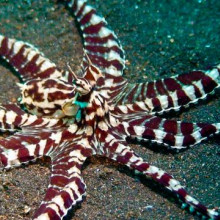
15:54 - Mimicking a mimic
Mimicking a mimic
Hitting the science news headlines is one of the oceans' most extraordinary animals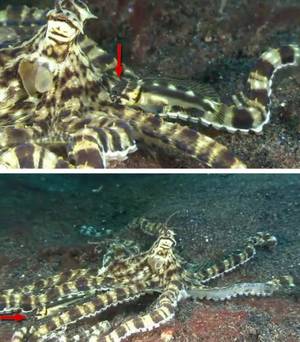 - the mimic octopus, Thaumoctopus mimicus. You might remember this was one of our 12 Critters of Christmas a while ago. They put on an eye-catching performance as they display elaborate behaviours and colouration to mimic a large range of poisonous species including sea snakes and lionfish - by co-opting the fearsome reputation of these animals, they startle predators and can swim about in the open even though they themselves are soft, vulnerable, and harmless.
- the mimic octopus, Thaumoctopus mimicus. You might remember this was one of our 12 Critters of Christmas a while ago. They put on an eye-catching performance as they display elaborate behaviours and colouration to mimic a large range of poisonous species including sea snakes and lionfish - by co-opting the fearsome reputation of these animals, they startle predators and can swim about in the open even though they themselves are soft, vulnerable, and harmless.
Now scuba divers have spotted another species that mimics the mimic. The black-marble jawfish isn't new to science but for the first time it's been spotted hanging out with a mimic octopus. The jawfish has similar brown and white patterns as the octopus and as you can see in the video (link below) filmed by Godehard Kopp from the University of Gottingen, Germany, the little fish is very difficult to spot among the octopus's tentacles. And the octopus doesn't seem to notice or care.
This is the first known case of mimicry in jawfish and is published this month in the journal Coral Reefs.
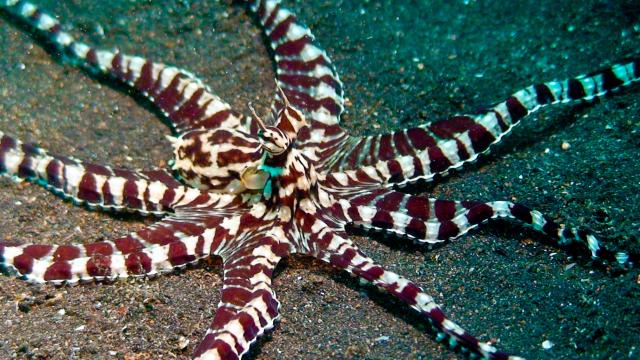 Find out more:
Find out more:
You tube video of
jawfish and mimic octopus
Rocha LA, Ross R, Kopp G. 2011. Opportunistic mimicry by a jawfish.
Coral Reefs.
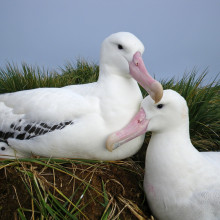
17:46 - Studying wandering albatross on Bird Island
Studying wandering albatross on Bird Island
with Andy Wood, British Antarctic Survey
Andy Wood from the British Antarctic Survey tells us about how he studies the birds with the world's largest wings - the wandering albatross - on Bird Island in the sub Antarctic.
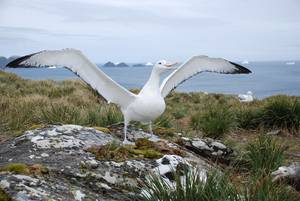 Sarah - We heard earlier in the show about Birdlife International's work in setting up conservation areas for sea birds across the globe. And that work relies on data collected in the field by researchers, about where birds live, their migration routes, how they use different parts of the ocean and so on.
Sarah - We heard earlier in the show about Birdlife International's work in setting up conservation areas for sea birds across the globe. And that work relies on data collected in the field by researchers, about where birds live, their migration routes, how they use different parts of the ocean and so on.
To find out more about what goes on in the field and how sea birds are studied, I caught up with Andy Wood from the British Antarctic Survey. He's just got back from spending 3 months on Bird Island in South Georgia, where he studies the most impressive fliers on the planet - the wandering albatross.
Their wings are the largest that glide through the skies today, at around 3 metres or 9 feet. Andy told me how he goes about studying these giant birds.
Andy - The way you study them is carefully. Because you've got a bird there with a wingspan of 3-4 metres. If you think of the size of a swan it's slightly bigger than that, and you've got to keep that under control if you're going to put on some mark on it like a ring or some other device.
You treat them with respect. We've got marked populations of birds at bird island, down in South Georgia, going back to the late 1950s. So we've been doing it for a few years - not me personally, but BAS and others have been doing it for many years.
Sarah - What sort of things are you attaching to them? Tracking devices? Tags?
Andy - Yes, all of those. The basic thing for birds is usually a metal ring, and that's what we started off with. Then, we moved to using the plastic ring because that allows us to identify the bird without disturbing it too much. Birds at Bird Island are very very tolerant of people. You can walk up very close to them and they don't worry that you're there.
So with a plastic ring, with a number on it, we can read those, just walk around the island and see the birds and that helps from our perspective because we don't have to handle birds, birds don't get stressed out by our presence.
We've also moved onto other devices. So we've put satellite transmitters which allows us to follow them when they're not on land. Because clearly we can only look at part of their breeding cycle when they're actually nesting on the island, and rearing chicks.
We put satellite transmitters on them, we put on smaller devices to collect basically where they go around the world. Where they go is all around the Southern Ocean.
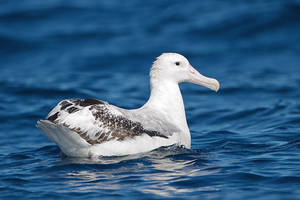 Sarah - And with the ring, is the sort of information you're getting from that which individuals are breeding together, how many chicks they're having, how long they live, that sort of thing?
Sarah - And with the ring, is the sort of information you're getting from that which individuals are breeding together, how many chicks they're having, how long they live, that sort of thing?
Andy - Yes, again, all of those. We have a database that started off in the late 1950s, of all the handled birds at Bird Island that are still coming back to Bird Island. And we know the history of their partners, whether they change partners over the years and if they produce any chicks, if the chicks come back again. So yes, we have a full life history of all the birds at Bird Island.
Sarah - And what are your conculsions from this kind of data? Are we seeing any changes in their movements, changes in their breeding success?
Andy - It takes a long time to build up information on a bird - to just give you some idea of how long these birds live, we've had birds ringed at Bird Island as adults and their still coming back again. So they're 50-odd years old, at least. So we've got a long-lived species that breeds if successful only every other year, so it produces a chick hopefully every 2 years.
And from this we've found out that the population is actually declining. Putting all out other studies together it's been found that it's long line fishing that's causing the major problem with this species.
So lots of other people are trying to work on this partciaulr problem from the fisheries aspect of it. But we're monitoring the long term populations trends of say the Wandering Albatrosses and I'm afraid it's been on gradual decline since the 1970s.
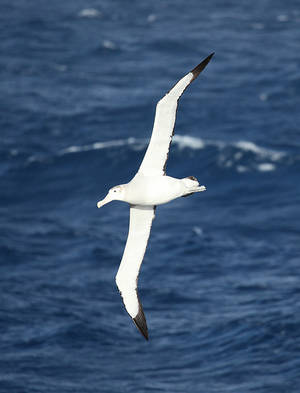 Sarah - And I think people might not really understand how something that's designed to catch fish will end up catching sea birds. How exactly do the albatrosses get caught by these long lines?
Sarah - And I think people might not really understand how something that's designed to catch fish will end up catching sea birds. How exactly do the albatrosses get caught by these long lines?
Andy - A long line, as the words might suggest, is a long line of hooks. The are baited hooks, quite often to catch tuna and those sorts of fish. They are streamed behind a ship. You can imagine there's a time between the bait coming off the back of the ship and it disappearing into the water and out of the reach of the bird, and it's that time period that's critical because the bird thinks - Ah, there's a free meal here - and unfortunately the free meal is attached to a hook, and the hook then disappears down into the sea and that's the end of your albatross.
Sarah - So are there any practical conservation measures to counteract this bycatch issue?
Andy - Yes, there are many things that are being put into practise in regulated fisheries. Where the fisheries are well controlled there are lots of things they can do to stop the bycatch of birds on long lines.
They can put streamers behind the ships, make the bait sink fast. There are lots of things that are being done. The problem is that not all fisheries will put these into action, and it's the unregulated fisheries that are probably causing the most problems these days.
Sarah - You work on Bird Island, and I suppose it's aptly named because it's not just albatrosses that breed there. There's all kinds of sea birds that you see there, is that right?
Andy - That's right, yes. The wandering albatrosses, there's about 8-900 pairs there now, so that's a relatively small number of birds. There are 1000s of black browed albatrosses, and grey headed albatrosses, and other species such as giant petrels, blue petrels, white chinned petrels, I could go on.
So there are many, may different speceis of birds and Bird Island. And I should mention the penguins as well! We can't forget the penguins.
Sarah - So is it an important area for seabird conservation? Is it a protected area?
Andy - It is a protected area. The South Georgia Government designated a Site of Special Scientific Interest, so they restrict who can go there. So yes, it is a very important area. Particularly that it's rat-free. On South Georgia, the whalers brought along rats and the rats killed an awful lot of wildlife, particularly the burrowing petrels. Bird Island has been rat free and has ever had any rats. So we've got all the burrowing petrels and the endemic species such as the South Georgia pipit, which is quite an interesting small passerine bird that perhaps you wouldn't' expect to see on a sub-Antarctic island.
Sarah - Are you hopefully that some of these conservation strategies like the managed fisheries and augmenting the long liners so they work differently, sink faster. Are you hopeful that that might slow the decline of albatross numbers?
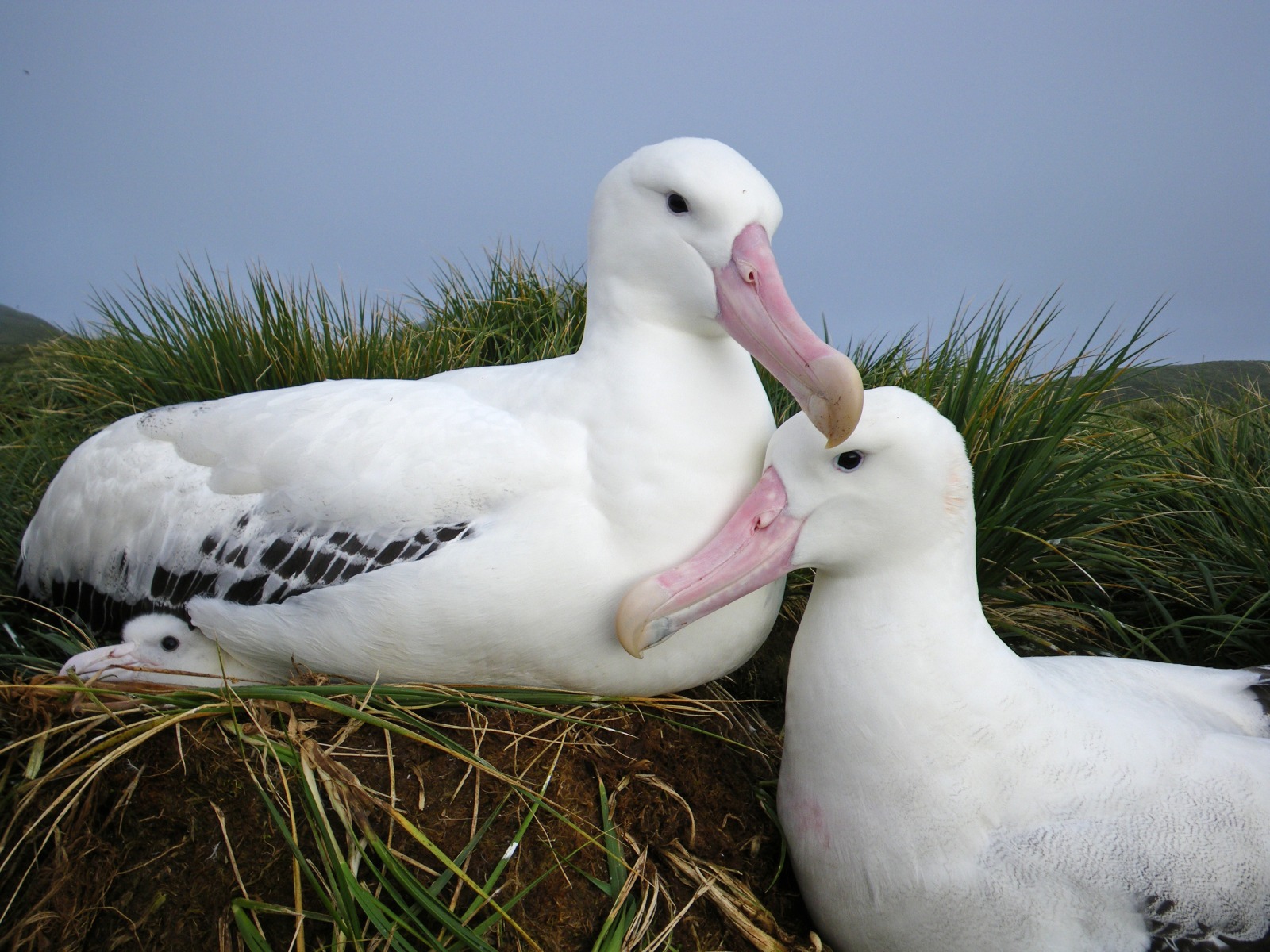 Andy - Hopeful. Whether it will and how long the effect might take to come back into the populations. All we can do is be positive and hope that yes, this will have an effect. As I say, for a long-lived species it's going to take a long time before that's going to show back in the populations at Bird Island. And unfortunately if the current trends carry on, we're going to have no Wandering Albatrosses on Bird Island in 30 or 40 years.
Andy - Hopeful. Whether it will and how long the effect might take to come back into the populations. All we can do is be positive and hope that yes, this will have an effect. As I say, for a long-lived species it's going to take a long time before that's going to show back in the populations at Bird Island. And unfortunately if the current trends carry on, we're going to have no Wandering Albatrosses on Bird Island in 30 or 40 years.
Find out more:
British Antarctic Survey
Bird Island Diary, by Andy Wood
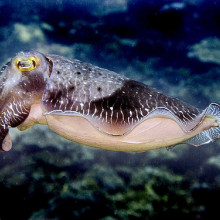
26:20 - Critter of the Month - Cuttlefish
Critter of the Month - Cuttlefish
with Heather Mason Jones, University of Tampa
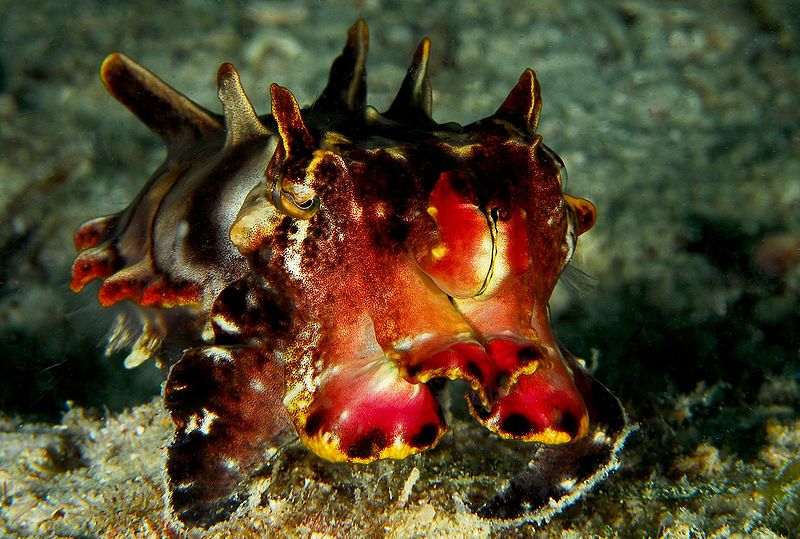 Heather: My name is Heather Mason Jones, I'm currently an associate professor at the University of Tampa, Florida and the species that I chose was one that has actually fascinated since I was a kid and it's not seahorses, despite the fact that I worked on seahorses for my career. The group that I have actually been fascinated with forever is cuttlefish.
Heather: My name is Heather Mason Jones, I'm currently an associate professor at the University of Tampa, Florida and the species that I chose was one that has actually fascinated since I was a kid and it's not seahorses, despite the fact that I worked on seahorses for my career. The group that I have actually been fascinated with forever is cuttlefish.
Really I think I first ran across them in Jules Verne, reading excerpts of 20,000 Leagues Under the Sea. There's a chapter in there talking about the attack by the large, scary cuttlefish creature. And, I think for me as a kid reading this it was like "Oh my goodness, this is the scary, horrible organism". I could not imagine a fish doing this scary, awful thing to this big, old ship. So, from that point forward it's just something that has kind of captured my imagination and I got increasingly interested in as a kid.
And, of course really I didn't find any time observing them or interacting with them at all until an adult because they aren't found in North and South America, they are actually found other plays in the World. But, they are absent from our coast line which is actually, a relatively, unusual thing considering there's 120 species in the rest of the World. That was another part of their allure was that there was this fantastic creature that was common elsewhere and yet wasn't found on the coastline that I grew in.
Cuttlefish have a very unusual way of being. They've got this elaborate camouflage mechanism that allows them to not just match the colour of their background with their chromataphores, they also have the ability to change the texture of their skin to make it look either smooth or to have it look like its got little tufts of algae off of the surface of it. Walking up to a fish tank you're actually looking at it thinking you're seeing a bunch of rocks on the bottom and actually realizing that these are organisms that are matching the background completely.
And, then spending time trying to get them to interact with you, you can actually 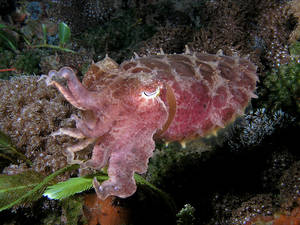 use your fingers on the front of the tank to pretend to have the tentacles of the cuttlefish and encourage the cuttlefish on the other side of the glass to react to you as if you were an aggressor. And, so when you do that these rocks change to these elaborately coloured, striped, spotted organisms that are no longer cryptic.
use your fingers on the front of the tank to pretend to have the tentacles of the cuttlefish and encourage the cuttlefish on the other side of the glass to react to you as if you were an aggressor. And, so when you do that these rocks change to these elaborately coloured, striped, spotted organisms that are no longer cryptic.
They are incredibly obvious in the tank and you can actually see the waves of colour moving along the sides of their bodies and it looks like there is just all of this emotion running over the surface of this organism because you can see these waves of reddish colouration and other kinds of colours across their surface and watch them interact with you across the glass. And also interact with each other; they have an elaborate mate choice mechanisms. Males compete for access to females and have these bright colourations that they use to engage with the females. And so they are very interesting and unique species that has this very cryptic lifespan that also has this kind of very elaborate and very showy colouration as well.
Find out more:
Heather Mason Jones, University of Tampa.
BBC Nature, facts and videos on the Australian giant cuttlefish
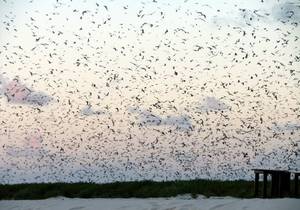










Comments
Add a comment